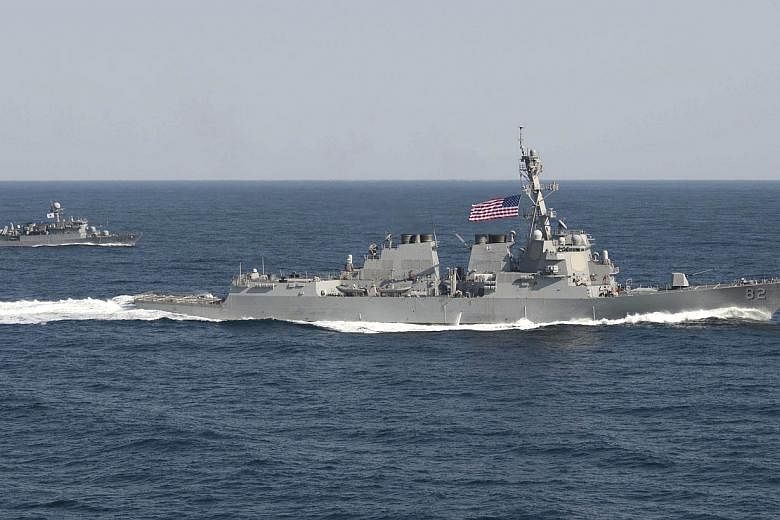WASHINGTON (REUTERS) - The US Navy plans to send the USS Lassen destroyer within 12 nautical miles of artificial islands built by China in the South China Sea within 24 hours, the first of more regular challenges to China's territorial claims, a US defence official said on Monday.
The destroyer's patrol would occur near Subi and Mischief reefs in the Spratly archipelago, features that were formerly submerged at high tide before China began a massive dredging project to turn them into islands in 2014.
The ship would likely be accompanied by a US Navy P-8A surveillance plane, and possibly P-3 surveillance plane, which have been conducting regular surveillance missions in the region, according to the official.
The patrol will mark the most serious US challenge yet to the 12-nautical-mile territorial limit China claims around the islands, and follows months of deliberation.
Additional patrols could follow in coming weeks, the official said.
Similar US patrols were also conducted around features that Vietnam and the Philippines have built up in the Spratlys in the past, according to the U.S. Defence Department.
The move risks significantly upsetting already strained ties with China, the world's second biggest economy, with which US business and economic interests are deeply intertwined.
The patrol will come just weeks ahead of a series of Asia-Pacific summits President Barack Obama and Chinese President Xi Jinping are expected to attend in the second half of November.
China claims most of the South China Sea and on Oct 9 its Foreign Ministry warned that Beijing would "never allow any country to violate China's territorial waters and airspace in the Spratly Islands, in the name of protecting freedom of navigation and overflight."
The United States argues that under international law, building up artificial islands on previously submerged reefs does not entitle a country to claim a territorial limit and that it is vital to maintain freedom of navigation in a sea through which more than US$5 trillion (S$6.96 trillion) of world trade passes every year.

